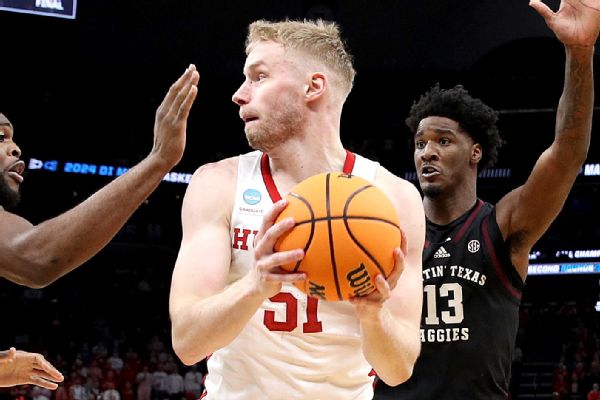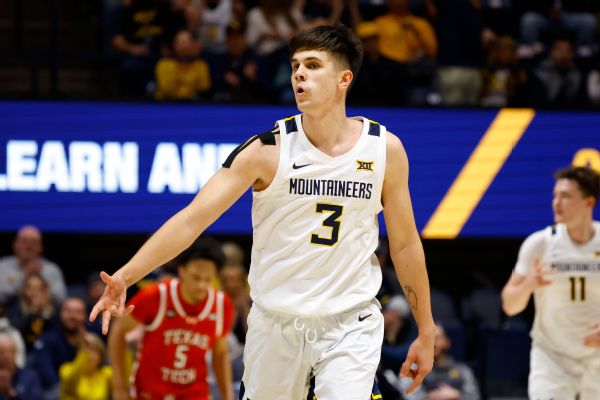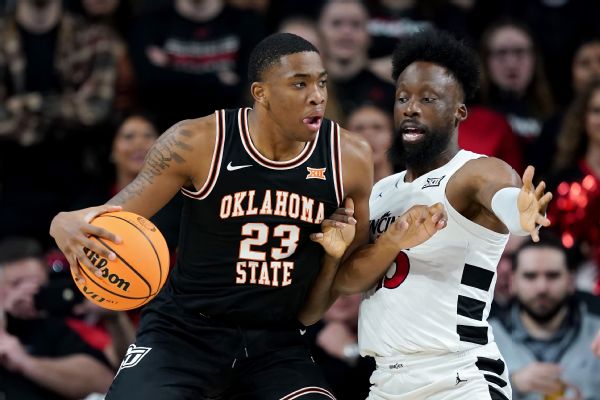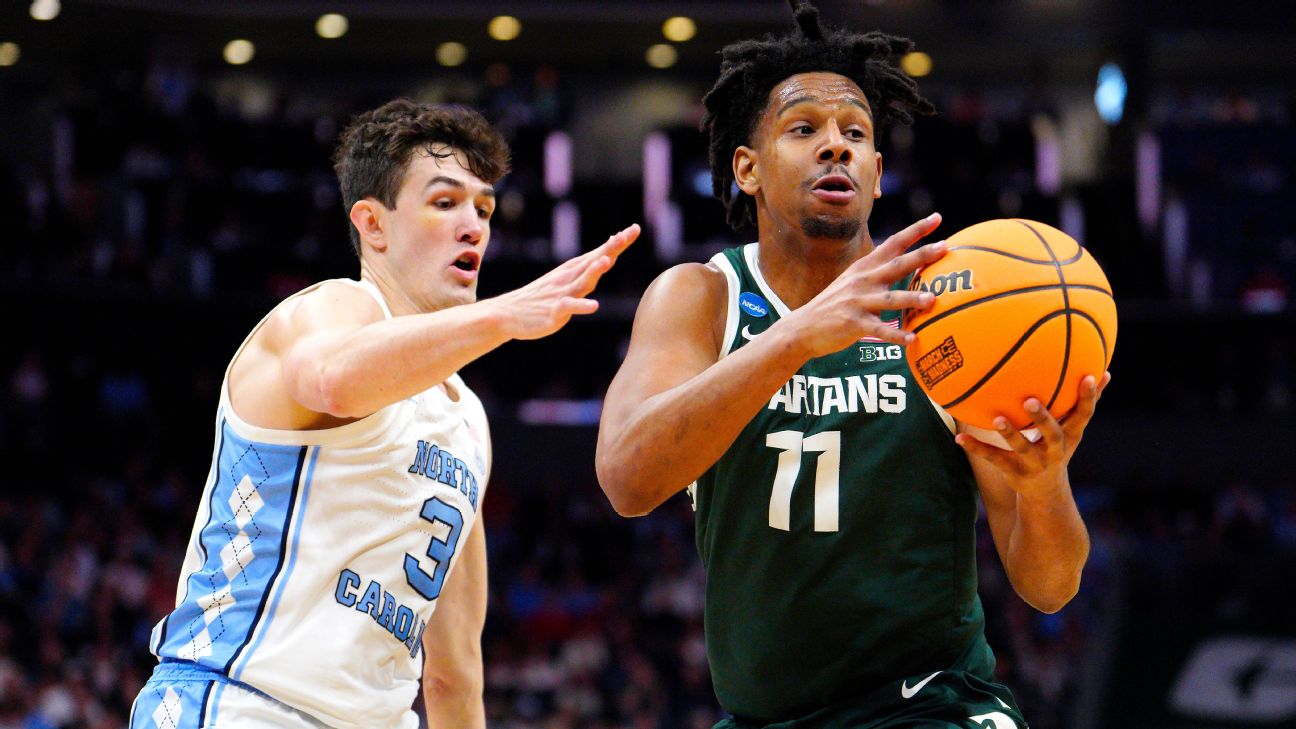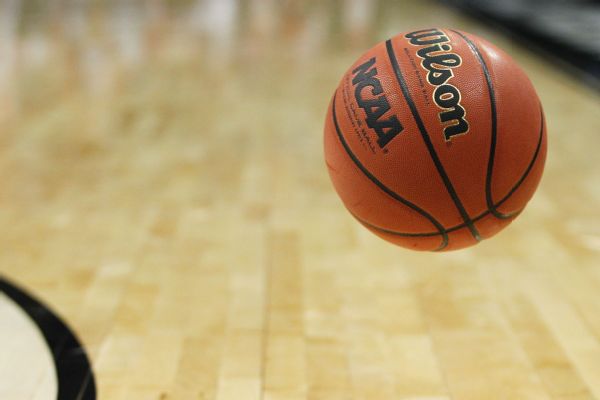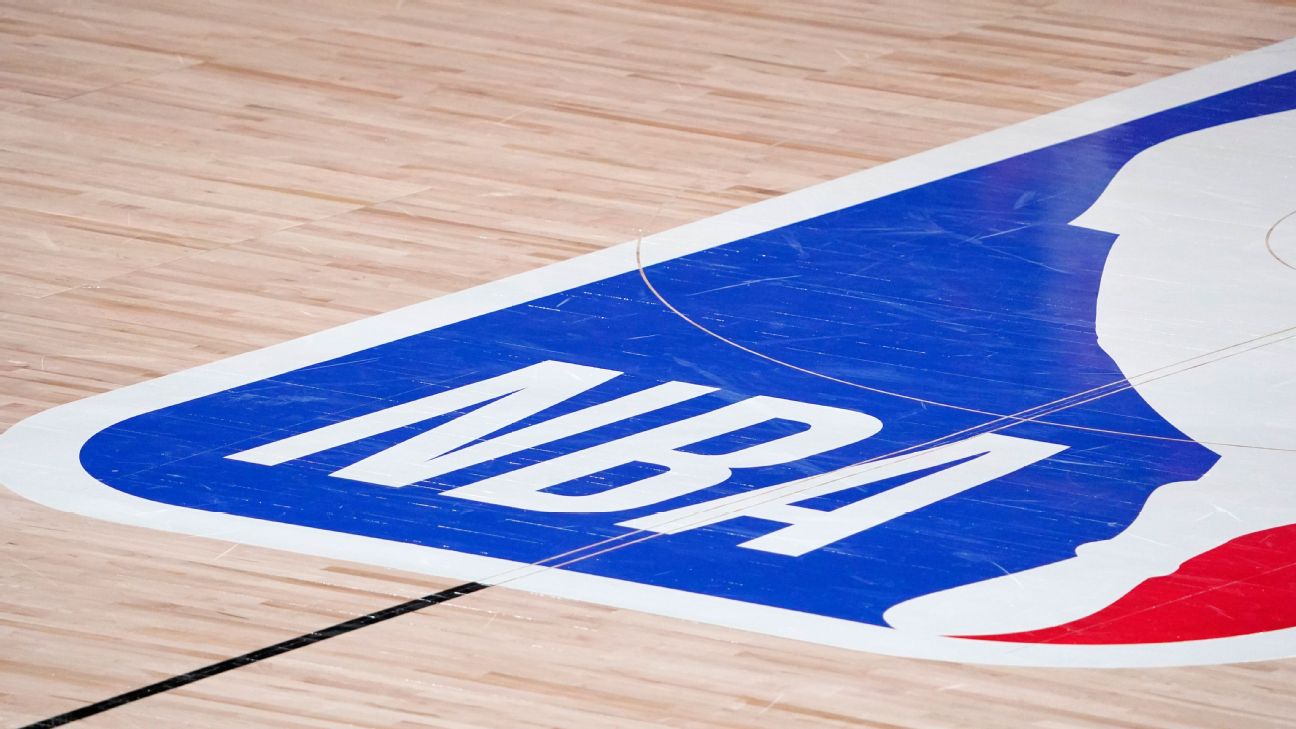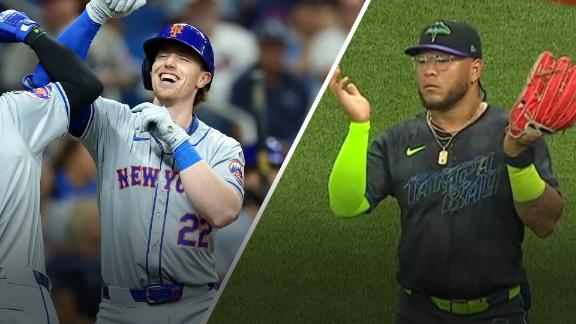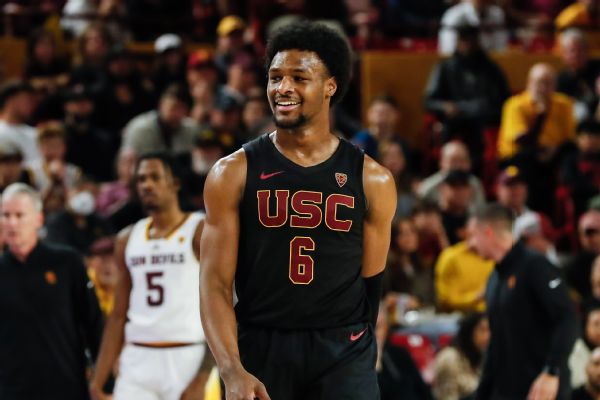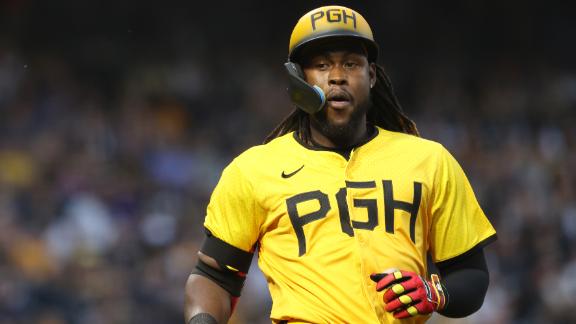![Pascal Siakam [608x342]](https://a.espncdn.com/photo/2024/0425/r1324156_608x342_16-9.jpg)
Lakers Russell fined 25K for verbal abuse of ref
Following Wednesday night, every team in the 2024 NBA playoffs has now played two games. And while that puts us halfway to potential sweeps, it's also early in the NBA postseason, which requires its champion to win 16 times.
With that in mind, let's look at the early trends from a first round that has favored the higher seeds more than expected thus far. The average of 6.25 wins ahead in the standings for the eight teams with home-court advantage in the first round was tied for the lowest in an 82-game season since the NBA went to its current playoff format in 1984, yet those teams swept Game 1s at home.
There's plenty of time for things to change as the matchups shift toward the lower seeds' hosting starting Thursday night. Which notable statistics from the first few days of the 2024 playoffs -- including a precipitous drop in points per game, Jalen Brunson's poor shooting and Pascal Siakam leading all players in scoring -- might continue and which are more likely fluke than reality?
Real: Scoring is way down ... againThe NBA's scoring slowdown in the second half of the season was a key storyline, but teams still averaged 111.6 PPG after the All-Star break. There's been a much more substantial erosion so far in the first week of the playoffs, with teams recording just 101.3 PPG through two games each -- the lowest since the 2016 playoffs (99.8 PPG), and more than eight PPG less than last year's 109.6 average.
Already, 14 teams -- including four that have won -- have failed to reach 100 points in a game. That happened 19 times over last year's first round. Similar to the last two months of the regular season, the lack of whistles seems to be benefiting defenses. Teams have been called for just 18.8 fouls per game, the lowest in NBA history. As compared to the regular season, however, poor shooting has been a much bigger factor. Teams are collectively shooting 34% from 3-point range, the lowest percentage since the post-lockout 2012 playoffs, while their 50% accuracy inside the arc is down from 53% a year ago.
It's more reasonable that referees allowing extra contact has influenced the low 2P%. The Athletic NBA reporter Seth Partnow noted Wednesday that shooting percentages on contested shots inside 10 feet are down an even greater amount as compared to recent postseasons.
It's unlikely teams will continue to shoot so poorly from long distance, and it's possible referees will adjust again if physical play becomes a storyline like high scores were at midseason. Still, last year's scoring heights seem out of reach this postseason. Scoring does tend to decline game by game over the course of a series as fatigue and intensity increase, meaning playoff scoring might get worse before it gets better.
Not real: Home team dominationIt took until the fourth day of the playoffs to see a first road win, as the home teams went 8-0 in Game 1s for just the fifth time in the 16-team playoff era. The higher seeds followed it up with wins in the first four Game 2s before the Indiana Pacers and Dallas Mavericks got the road teams on the board Tuesday night.
That result was surprising because these first-round matchups figured to be unusually close. The "Dunc'd On" podcast found that pre-series betting lines favored higher seeds less than at any point on record. Additionally, home-court advantage has been on the decline in recent years. Over the past four playoffs played in NBA arenas, home teams have won just 58% of Round 1 games -- less even than "home" teams in the 2020 NBA bubble first round on neutral courts (59.5%) in Orlando during the pandemic.
Consider me skeptical that this trend has really reversed. Much of the success home teams have enjoyed so far can be traced to 3-point shooting. The higher seeds shot a collective 36% on 3s in the first two games at home, as compared to 32% road shooting. Home teams typically shoot a little better from 3, but by less than a percentage point (36% to 35% over the past decade, not including the bubble). And already we've seen that gap narrow from Game 1 (when home teams shot 39% and road teams just 28%) to Game 2.
Inevitably, the lower seeds are less successful at home than high seeds, so this stat will undoubtedly change dramatically over the next five days. Even when the series returns for Game 5s, road teams will probably shoot better.
More real than not: Knicks winning with Brunson strugglingIf it was known before the playoffs that Brunson would shoot 16-of-55 (29%) in the New York Knicks' first two games, including 2-of-12 from 3-point range, you surely wouldn't have expected the Knicks to be up 2-0 in their series headed to Philadelphia. More surprising yet, New York boasts the NBA's second best offensive rating through two playoff games.
In terms of traditional half-court offense, the Knicks have been near the bottom of the league, averaging just .86 points per play according to Cleaning the Glass. As has become a trademark under coach Tom Thibodeau, New York has dominated the offensive glass, rebounding a league-high 42.5% of available missed shots. The Knicks also rank first in transition offense, per Cleaning the Glass, despite generating high-value steals at a below-average rate.
To some extent, both of those factors can probably be traced to Joel Embiid. Playing at far less than 100% after midseason knee surgery, Embiid has grabbed just 14% of available defensive rebounds in this series, down more than half of his regular-season mark (29%). Meanwhile, New York has been credited with 25 fast-break points in Embiid's 76 minutes on the court and none in the 20 minutes he's rested, per NBA Advanced Stats.
Continuing to manufacture points in transition and on second chances will be important as the 76ers have done an outstanding job of containing Brunson with fellow All-Star Julius Randle sidelined by shoulder surgery. According to Second Spectrum's quantified shot quality (qSQ) measure, which factors location and type of shot as well as distance to nearby defenders, Brunson's shot trends through two games has been second hardest among players with at least 20 attempts.
Given his ability, Brunson should shoot better going forward. His minus-16.8 quantified shot making (qSP) via Second Spectrum, which compares his actual effective field goal percentage (31%) to what we'd expect based on shots taken and past shots made (48%), is second lowest among players with at least 20 attempts. The combination of a 2-0 series lead and eventual Brunson regression puts New York in strong position to win the series.
Not real: Siakam's sizzling startA good rule of thumb is the more shocking a statistic is, the less likely it is to continue. Such is the case with Siakam leading all players with 36.5 PPG through the first two games of the playoffs. Dan Feldman of the "Dunc'd On" podcast noted that Siakam was the first player not chosen as an All-Star that season to ever score 35 points or more in the first two games of any playoff series.
Granted, Siakam has been an All-Star as recently as last season. The past two games are his two highest-scoring ever in the playoffs, however, surpassing the 34 points he scored in the 2022 first round against the Philadelphia 76ers as a member of the Toronto Raptors.
The Milwaukee Bucks have largely cross-matched defensively, putting 7-footer Brook Lopez on Siakam while using Bobby Portis -- starting at power forward in place of the injured Giannis Antetokounmpo -- on Indiana Pacers center Myles Turner. And Siakam has cooked the slower Lopez, scoring 30 points in 52 matchups with a 75% eFG%, according to Second Spectrum tracking.
That shot-making is coming on favorable shots for Siakam, whose 52% qSQ ranks second among players with at least 30 shot attempts per Second Spectrum. Yet he's still due to cool down. Siakam has shot 7-of-12 (58%) on 2-pointers from beyond 10 feet with the nearest defender closer than 6 feet away, according to NBA Advanced Stats. In the regular season, Siakam made those shots at a 45% clip.
Defensive adjustments from the Bucks include the possibility that Antetokounmpo returns at some point in this series and moves the more defensively limited Portis back to the bench. It's also unrealistic that Siakam will continue to score 45% more points per minute than he did in the regular season.


